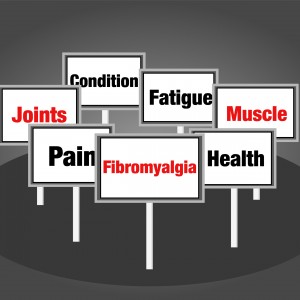 Researchers at the National Institutes of Health, National Heart Lung and Blood Institute in Bethesda and University of North Carolina at Chapel Hill found that women suffering from rheumatoid arthritis (RA) and fibromyalgia have an overall negative body image perception. The study was published in The Open Rheumatology Journal and is entitled “Comparisons of Body Image Perceptions of a Sample of Black and White Women with Rheumatoid Arthritis and Fibromyalgia in the US.”
Researchers at the National Institutes of Health, National Heart Lung and Blood Institute in Bethesda and University of North Carolina at Chapel Hill found that women suffering from rheumatoid arthritis (RA) and fibromyalgia have an overall negative body image perception. The study was published in The Open Rheumatology Journal and is entitled “Comparisons of Body Image Perceptions of a Sample of Black and White Women with Rheumatoid Arthritis and Fibromyalgia in the US.”
RA is an autoimmune disease that leads to chronic inflammation of the joints and other parts of the body, whereas fibromyalgia is characterized by widespread chronic musculoskeletal pain, stiffness and numbness in certain parts of the body, along with fatigue, headaches, sleep disorder and mood alterations. Both conditions can affect the ability of individuals to conduct simple daily tasks, compromising their quality of life. Women are known to have a significantly higher susceptibility to both disorders than men.
The goal of this study was to evaluate the body image perceptions from women with fibromyalgia and rheumatoid arthritis. To this end, phone interviews were conducted with 27 female participants, being 13 white and 14 black with an age range of 42-77 years, and 11 having fibromyalgia, 10 RA and 6 participants having both conditions. Information regarding body image perceptions of pain, limitations in activity and disease management were collected. All sessions were digitally recorded, transcribed and analyzed.
Researchers found that five main topics of body image perception were mentioned in the interviews: pain, weight, diseased-induced fears, disease impact on physical and mental function, and coping measures. All participants reported experiencing pain. Other concerns reported included aversion and shame of the visibly affected body parts, weight gain, and disease-induced social, psychological and physical limitations. RA participants also noted the belief that the redness and swelling present in their joints guaranteed their rapid diagnosis and proper treatment. Participants with fibromyalgia on the other hand, thought that the absence of visual physical signs related to the disease resulted in physicians overlooking the disorder, which led to delayed healthcare treatment and consequent anger and frustration. As coping measures for the disease, all participants except one noted meditation and prayer.
The team concluded that in general, the majority of the women evaluated had negative body image perceptions and focused on their disease-affected body parts like the joints, their self-identity, mental function, activity limitations, health care experiences and overall quality of life. The assessment of body image perceptions in women with fibromyalgia and RA could help establish better strategies for disease management and ultimately improve their quality of life.

